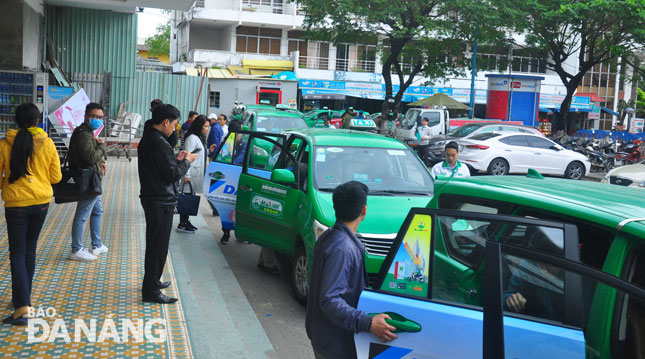Difficulties in capital budgeting for relocation of railway station
Over the past 15 years, despite 4 occasions of announcements, a project to move the existing Da Nang railway station out of the city heart to Lien Chieu District has yet to be deployed. The most difficult task is to ensure enough investment capital for this large-scale project.
 |
| The existing station is now not able to handle the rising number of train passengers travelling to the city. |
The station, which was built in 1902 in downtown Hai Phong Street, is now not able to handle the rising number of train passengers travelling to the city.
Dozens of trains arrive, depart and pass through the station daily, carrying more than 2,500 passengers in total to the city.
The relocation project aims to ease traffic congestion near the existing railway station and reduce environmental pollution in the inner-city.
The new location of the railway station will help to develop a green transport infrastructure link with the city centre, as well as to connect the soon-to-be-built Lien Chieu Port, future national high-speed railway routes, and the industrial parks on the northern side of the city.
In addition, the new railway station will help link the city’s north-south railway system with the Da Nang-Quang Ngai Expressway which is now underway, and the bypass expansion project on the southern side of the Hai Van Tunnel. Also, this will offer a lever for the development of the western and northwestern sides of the city.
 |
| It is difficult to ensure enough investment capital for this large-scale project. |
The 2-staged whole railway station removal project, which costs more than 5.7 trillion VND has been included in the city’s master plan for 2030, with a vision toward 2050.
According to a plan which has recently been approved by the municipal government, the 1st stage of the work is expected to cost over 3,300 billion VND. Included is the construction of 18.26km of new railtrack, a new passenger terminal, and the upgrade of the Le Trach goods station.
This stage will also cover the reconstruction of the Nam O and Quan Nam bridges, an overpass at a road-railway crossing, and 4 crossroads at intersections.
A synchronous signalling system will be installed, and locomotive equipment at the existing railway station will be moved to the new one.
In addition to the 1st stage outlined above, the 2nd stage will cover the rebuild of the Kim Lien Station, 4 overpasses and a synchronous signal system connecting with Vinh - Nha Trang project.
A total of more than 2,500 families are expected to be displaced by the project.
On 4 November 2016, the Prime Minister gave a nod to the implementation of the project using the public-private partnership (PPP) format. However, the city authorities and national government agencies had not reached conclusions regarding the capital budgeting and compensation work.
To date, the project has yet to be listed into in the country’s medium-term public investment plans for the 2016 - 2020.
The Da Nang People’s Committee, therefore, has suggested that, if it is impossible to grant the capital investment before 2020, the Prime Minister should agree on the capital allocation for the project as part of the national medium- term investment plan for the 2020 - 2025 period.
More recently, in an effort to start the project as soon as possible, on 8 June, representatives from the municipal Department of Transport met with those from the Viet Nam Railways Authority's railway project management unit to discuss investment plans.